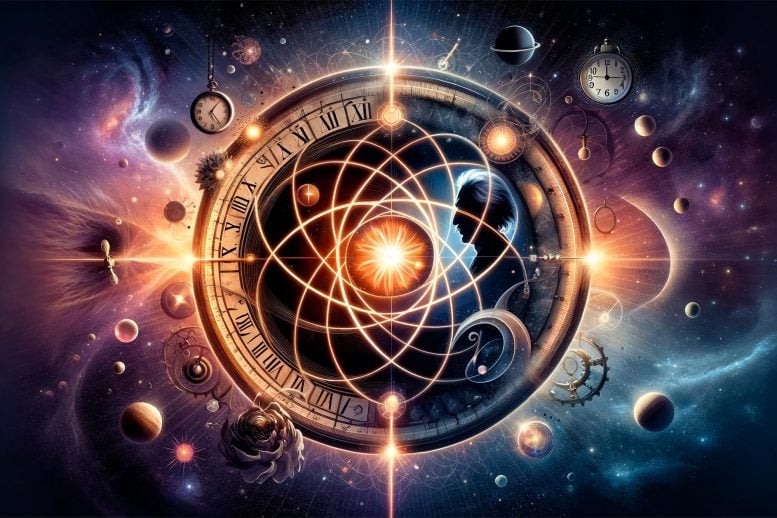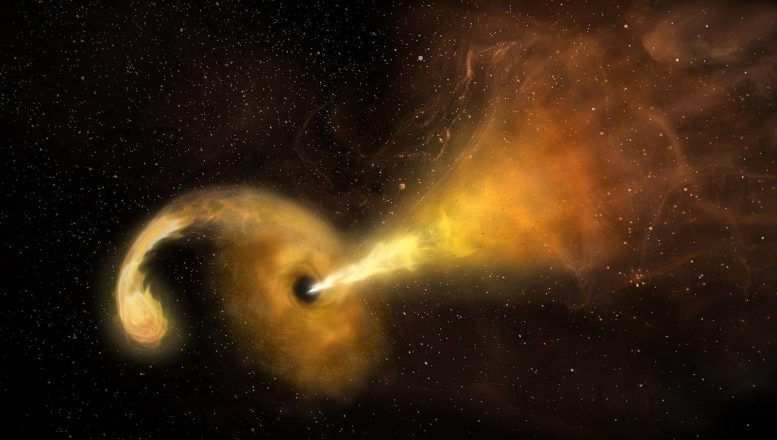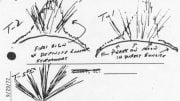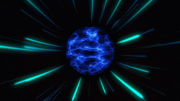
Relativity, comprising Albert Einstein’s theories of special and general relativity, revolutionized our understanding of space, time, mass, energy, and gravity. Special relativity introduces the constancy of light speed and consistent physics across non-accelerating reference frames, while general relativity explains gravity as the warping of space-time by mass. These theories are pivotal in modern scientific endeavors, including particle physics and GPS technology.
What Is the Theory of Relativity?
Relativity is two related theories: special relativity, which explains the relationship between space, time, mass, and energy; and general relativity, which describes how gravity fits into the mix. Albert Einstein proposed these theories starting in 1905. By the 1920s, they were widely accepted by physicists.
Special relativity involves two key ideas. First, the speed of light in a vacuum is the same for any observer, regardless of the observer’s location or motion, or the location or motion of the light source. Second, the laws of physics are the same for all reference frames that are not speeding up or slowing down relative to each other. A reference frame can be thought of as an environment in which an observer is at rest.
For example, when you drive down the road, your car can be thought of as your reference frame. You are at rest with respect to your car and everything in it. However, if a reference frame is moving relative to another, those two reference frames each has a different perspective on time and space. The three dimensions of space and the one dimension of time as well as how we measure them make up what physicists call the space-time continuum.

Why can’t objects escape black holes? Because special relativity holds that the speed of light is the same across the cosmos. Escaping a black hole’s gravitational pull at its surface (the event horizon) would require an object to move faster than light. Credit: Sophia Dagnello, NRAO/AUI/NSF
Einstein’s most famous equation describes the relationship between energy, mass, and the speed of light. It says energy (E) equals mass (m) times the speed of light (c) squared (2), or E=mc2. It means that mass and energy are related and can be changed from one to the other. Mass is basically the amount of material an object contains (which is distinguished from weight, which is the force of gravity on an object). Mass changes depending on the object. In contrast, the speed of light is a constant—it is the same everywhere in the universe.
The speed of light is incredibly high. Because the speed of light is squared in Einstein’s equation, tiny amounts of mass contain huge amounts of energy. Another result of the theory of special relativity is that as an object moves faster, its observed mass increases. This increase is negligible at everyday speeds. But as an object approaches the speed of light, its observed mass becomes infinitely large. As a result, an infinite amount of energy is required to make an object move at the speed of light. For this reason, it is impossible for any matter to travel faster than light speed.
Special relativity describes how the universe works for objects that are not accelerating, called inertial reference frames. However, it doesn’t incorporate gravity. That’s part of the theory of general relativity. Before Einstein, the traditional view was that gravity was an invisible force pulling things together. Instead, general relativity states that gravity is how mass warps space and time. The bigger the mass, the more it warps things. Imagine that the universe is a rubber sheet covered with objects of different weights, each sitting in a curved depression formed by that object’s weight; more massive objects will bend the sheet more. General relativity is why stars, which are incredibly massive, bend the path of light. Black holes, with huge amounts of mass in a small space, bend space so much they actually trap light.
Special and general relativity come together to show how time is measured differently in different frames of reference, called time dilation. This effect happens because different frames of reference perceive time and space differently. Let’s look at an example: the muon. Muons are subatomic particles that are created when cosmic rays hit the Earth’s atmosphere. They decay after just 2.2 microseconds. Although muons travel at nearly the speed of light, they decay so fast that they shouldn’t reach the Earth’s surface. But many do. To an observer whose reference frame is standing on the Earth’s surface, a muon should travel only .4 miles in its 2.2 microsecond life. But because muons travel so close to the speed of light, from their reference frame time passes for them about 40 times slower than viewed by an earth observer. This means, from our perspective on Earth, a muon has a lifetime of close to 90 microseconds, during which it can travel 16 miles. This effect is known as time dilation.
Relativity Fast Facts
- In keeping with relativity, as particle accelerators speed subatomic particles, they also make those particles incredibly massive.
- Global positioning system (GPS) satellites fly in different orbits around the Earth. These orbits are different frames of reference, so GPS has to take special relativity into consideration to help us navigate.
DOE Office of Science: Contributions to Special and General Relativity
As fundamental theories of physics, special and general relativity underpin all the work supported by the Department of Energy Office of Science. Relativity is particularly important to the research of the DOE Office of Science Nuclear Physics and High Energy Physics programs. In addition, relativity is essential to many of the scientific facilities the DOE Office of Science supports. For example, DOE’s particle accelerator user facilities, which speed subatomic particles to nearly the speed of light, must take relativity into consideration.









question comes to mind how would a muon be caught ? could a muon get directed to a colidder configuration and slowed with magnetic fields or harmonic residence, thermal dynamically, use some kind of repulsion to drive the muon around the circular formed device.
Measurement of the propagation delay between to dipole antennas as the antennas are moved from the nearfield to farfield show that radio waves (light) propagates instantaneously near the source and reduces to the speed of light in the farfield after about 1 wavelength. This corresponds to both the phase and group speed, and the also the information speed. This result is completely incompatible with Relativity. It can be shown that instantaneous nearfield light yields Galilean transformations. So time and space for moving inertial bodies can appear to change, but using instantaneous nearfield light will show time and space have not changed, whereas using nearfield light will show time and space have not changed. So the effects of Relativity including General Relativity are an optical illusion. Galilean Realtiviry is the true theory of Relativity where time and space are absolute. General Relativity is known to reduce to Gravitoelectromagnetism for weak gravitational fields, which is all that we observe, so Gravitoelectromagnetism should replace General Relativity. Particularly important is that Gravitoelectromagnetism is a field theory and can be quantized (graviton) enabling the unification of gravity and Quantum Mechanics. Currently the Copenhagen interpretation is the most accepted interpretation, which assumes particles are not real until observed. Where as the Pilot Wave interpretation assumes particles are always real and are guided by a real pilot wave that acts instantaneously across space with other particle. It is not compatible with Relativity, but is compatible with Galilean Relativity, making it now the preferred interpretation of Quantum Mechanics given the results presented in this post. For more information see my short YouTube presentation:
https://www.youtube.com/watch?v=sePdJ7vSQvQ
and the paper it is based on:
http://vixra.org/abs/2309.0145
“As a result, an infinite amount of energy is required to make an object move at the speed of light. For this reason, it is impossible for any matter to travel faster than light speed.”
However, from the point of view of the occupants of a space ship, they continue to accelerate as long as there is fuel to propel it. Time slows down for them, so they don’t perceive anything preventing them from accelerating for an infinite amount of time. However, they should perceive a red-shift in the light coming from their destination.
For an outside observer, the mass of the space ship approaches infinity. That means for a chemically-propelled ship, each and every molecule of exhaust approaches an infinite mass. Thus, there is no impediment to continued acceleration. However, what happens to the curvature of the universe as a small body has its mass approach infinity?
It would appear that the speed of light is a singularity at which Time, as observed by someone outside the frame of reference, essentially stops, but the speed approaches the speed of light asymptotically; the length of the ship approaches zero. The question is, other than the red-shift, what do the occupants observe?
“Global positioning system (GPS) satellites fly in different orbits around the Earth. These orbits are different frames of reference, so GPS has to take special relativity into consideration to help us navigate.”
Best reason for not mentioning general relativity (GR) there, Einstein’s gravity theory, is because GR doesn’t actually work, because space isn’t bent, because gravity changes the speed of light, because gravitational dilation of photons doesn’t mean dilation of the spaces between photons.
a new question does time have existence without a observable movement, outside the universe, we are a massive reactive weak force tensioned to a stronger force
Experiment proves information can propagate instantaneously across space
————————————————————————————
We present an experiment that proves conclusively that information can be propagated nearly instantaneously across space, in the nearfield of an electromagnetic pulse. The experiment consists of a ~30kV high voltage spark generator creating an electromagnetic pulse that propagated 1.5m to a detector. The leading edge of the transmitted pulse and the leading edge of the detected pulse were then compared using an oscilloscope and no time delay within the capability of the scope was observed, where 5ns is predicted if it had propagated at the light speed. The maximum uncertainty in the measurement was 1ns due to noise in the electronics. Since a pulse is digital information. This experiment proves information can be transmitted across space nearly instantaneously. The results is perfectly predicted by Maxwell equations, which yield a wave equation set equal to a source term. Analysis of this equation shows that the phase speed, group speed, and information speed are instantaneous in the nearfield and reduce to the speed of light in the farfield. Below is a link to see a preprint of the paper. We are currently looking for a journal for peer review and publication. The impact of this discovery has implications in both engineering and the foundations of modern physics. The result is completely incompatible with Relativity. Instantaneous signals invalidate Relativity of Simultaneity in all inertial frames and can be used to synchronize all their clocks. In addition, a derivation of Relativity using instantaneous electromagnetic fields (light) yields Galilean Relativity, where time is the same in all inertial frames of reference, and there is no speed limit for mass, fields, and, even light. This can be easily be seen by inserting c=infinity into the Lorentz Transform, yielding the Galilean Transform. This means that if a moving object is observed with farfield speed c light, then Relativistic effects will be observed. But the effects are not real and can be proved by simply changing the frequency of the light, such that instantaneous nearfield light is used, causing the Relativistic effects to disappear. This then proves that the effects of Relativity are just an optical illusion. Since General Relativity is based on Special Relativity, then it has the same problem. A better theory of Gravity is Gravitoelectromagnetism which assumes gravity can be mathematically described by 4 Maxwell equations, similar to to those of electromagnetic theory. It is well known that General Relativity reduces to Gravitoelectromagnetism for weak fields, which is all that we observe. Using this theory, analysis of an oscillating mass yields a wave equation set equal to a source term. Analysis of this equation shows that the phase speed, group speed, and information speed are instantaneous in the nearfield and reduce to the speed of light in the farfield. This theory then accounts for all the observed gravitational effects including instantaneous nearfield and the speed of light farfield. The main difference is that this theory is a field theory, and not a geometrical theory like General Relativity. Because it is a field theory, Gravity can be then be quantized as the Graviton. Lastly it should be mentioned that this research shows that the Pilot Wave interpretation of Quantum Mechanics can no longer be criticized for requiring instantaneous interaction of the pilot wave, thereby violating Relativity. Consequently the Pilot wave interpretation should become the preferred interpretation of Quantum Mechanics due to its deterministic simplicity.
Electromagnetic pulse experiment paper: https://www.techrxiv.org/doi/full/10.36227/techrxiv.170862178.82175798/v1
YouTube presentation of above arguments:
https://www.youtube.com/watch?v=sePdJ7vSQvQ&t=0s
More extensive paper for the above arguments:
William D. Walker and Dag Stranneby, A New Interpretation of Relativity, 2023:
http://vixra.org/abs/2309.0145
Dr. William Walker